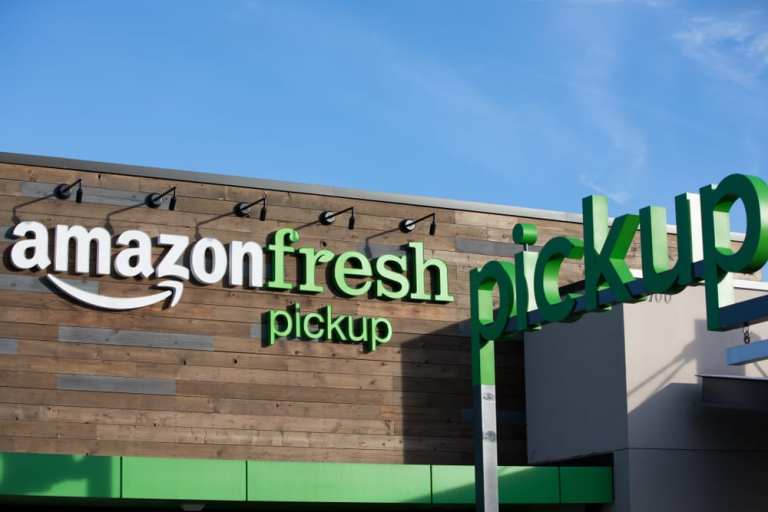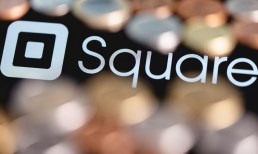Targeted at a different demographic than Amazon’s Whole Foods stores, the new Amazon Fresh in Los Angeles’ Woodland Hills section is opening for invitation-only shopping this week. A public opening will follow in the next several weeks, the company said in a statement.
The Woodland Hills location is one of four Amazon Fresh stores that Amazon has built, including others in Irvine and Northridge, California, as well as in Chicago’s Naperville neighborhood, according to CNBC. The other three sites are currently only in use for online order-delivery staging and are not yet open to the public. Their opening date remains undisclosed.
Amazon designed the Woodland Hills store to blend online and in-person shopping models. The 35,000-square-foot spot will sell not just the organic and health-oriented goods that Whole Foods offers, but also traditional supermarket staples. It will also offer products from Whole Foods’ 365 private-label brand, along with Amazon-branded products.
“We do think of these formats as complementing one another and serving different needs,” CNBC quoted Jeff Helbling, vice president of Amazon Fresh store, as saying. “Whole Foods is a longstanding pioneer and leader in natural, organic and clean foods. Amazon’s Fresh selection is fairly different. We see them operating next to one another, and we’re excited to offer customers the choice between the two.”
And, of course, it wouldn’t really be an Amazon production without some high-tech flourishes, like the launch of Amazon’s Dash Carts. When consumers log in via the Amazon app, these carts will use built-in cameras and sensors to keep track of what they are purchasing. The customer can then use the cart to check out without having to stop at a cashier or self-service pay station. Dash Carts are also compatible with shopping lists made using Amazon’s Alexa voice assistant, and can work in tandem with Echo Show devices spread throughout the store to point shoppers in the right direction for the goods they want. Alexa-enabled kiosks will also offer suggestions for consumers seeking ideas on what to cook.
Advertisement: Scroll to Continue
But unlike Amazon Go convenience stores – where customers simply walk in, buy things and walk out with no cash registers – Amazon Fresh shops won’t have the complex network of sensors and cameras for cashierless experiences. Still, the new stores will have dedicated service windows for digital customers to pick up grocery orders placed online, or to get or return general merchandise that they bought on Amazon.com.
CNBC said Amazon had been using its four Amazon Fresh sites as “dark” stores for assembling some of the online orders that came pouring in as COVID-19 kept consumers away from brick-and-mortar supermarkets. Amazon recently said that its online grocery sales tripled year over year during Q2, prompting the eCommerce giant to increase grocery delivery capacity by more than 160 percent.
Walmart Isn’t Standing Still…
The idea of adding brick-and-mortar stores was likely also given a boost by all the emerging competition to capture the newly digitized grocery shopper. For instance, Walmart’s grocery performance swelled as a result of the COVID-19 pandemic.
Although Walmart didn’t break out specific figures for grocery in its quarterly results, CEO Doug McMillion did say in a call with analysts that grocery performance was a major contributor to the 97 percent growth the chain saw in eCommerce results. He also said that groceries helped spark a 27 percent increase in average basket size.
Walmart has also looked to raise the level of its grocery game with its recently announced partnership with Instacart to offer same-day delivery service that will rival Amazon’s offering via Whole Foods. Walmart and Instacart are testing the service in four California and Oklahoma markets with an eye toward a national rollout in 2021.
“The new partnership brings thousands of items — from groceries, alcohol and pantry staples to home decor and improvement, personal care, electronics and more — at everyday low prices from Walmart stores to customers’ doors in as fast as an hour,” Instacart said.
…and Neither Is Kroger
And Walmart isn’t the only big name in the grocery space looking to enhance its digital offerings. Kroger earlier this month rolled of its own online marketplace to enhance the popular Kroger Ship service and widely expand the assortment of private-label products that the chain sells online.
The new platform will give shoppers access to 50,000 additional products in areas such as international foods, housewares, specialty items, toys and natural and organic items. The addition comes on the back of Kroger’s own recent digital growth spurt, which saw online sales shoot up 92 percent in Q1. Kroger also recently rolled out an enhanced delivery offering via Instacart.
“Our customers are increasingly turning to our eCommerce solutions provided at Kroger.com for their grocery and household essential needs,” said Jody Kalmbach, group vice president of product experience.
Who Will Win? Consumers
Add it all up and the market for groceries is getting more competitive and more technologically advanced.
And while it remains to be seen what will come next from merchants, the real winner is already known. All of the upgrades will give consumers a chance to take advantage of the slew of enhanced, multichannel offerings.




